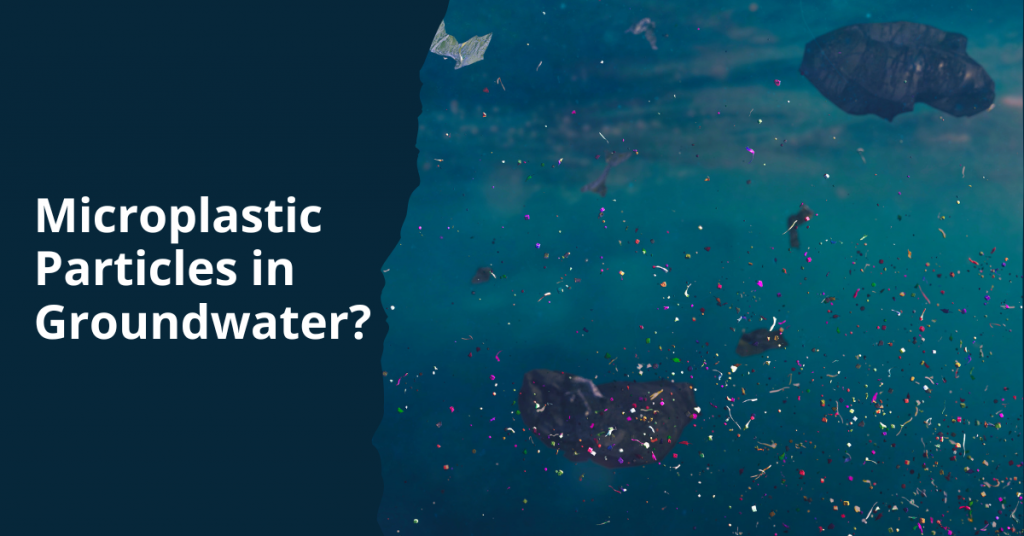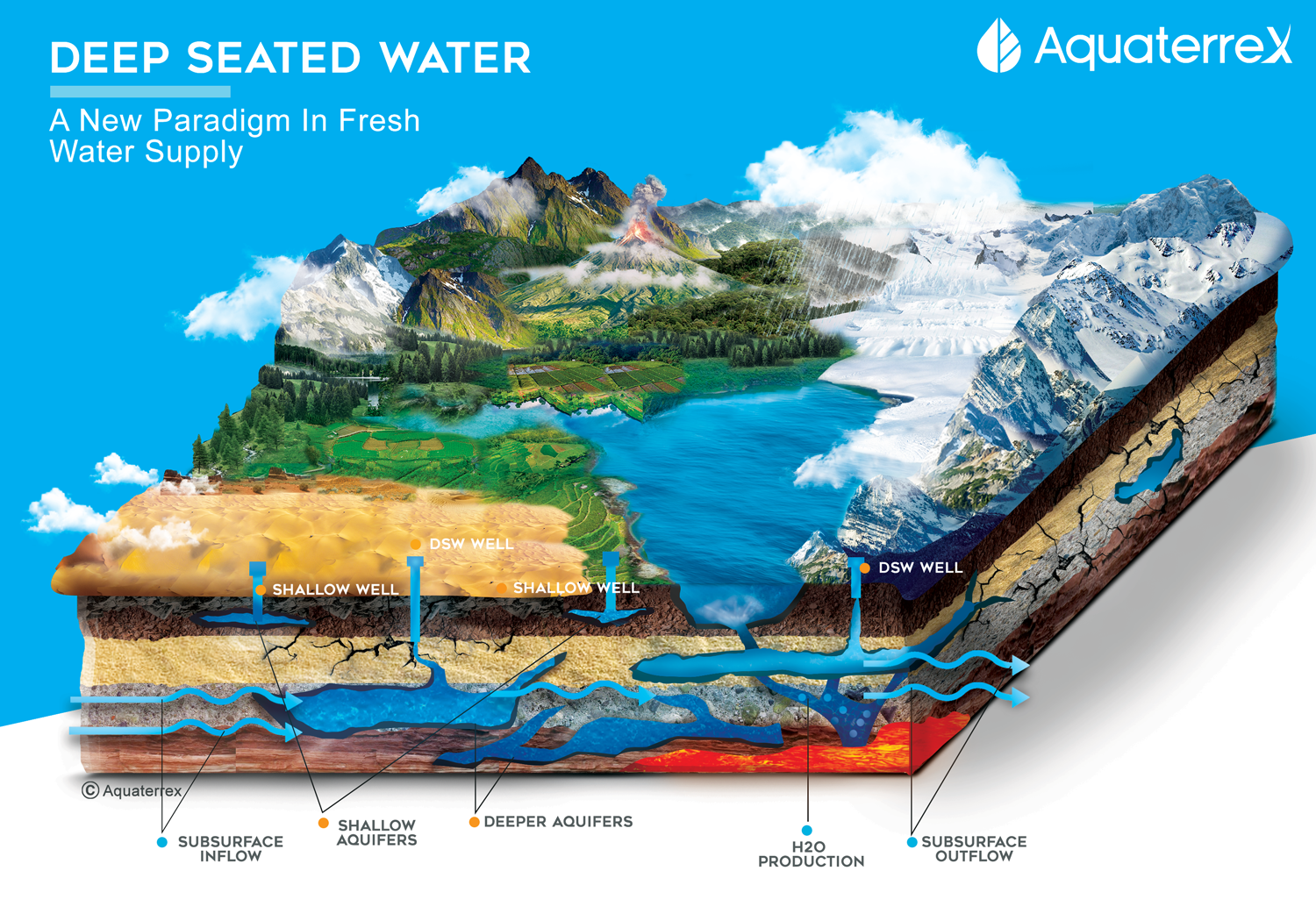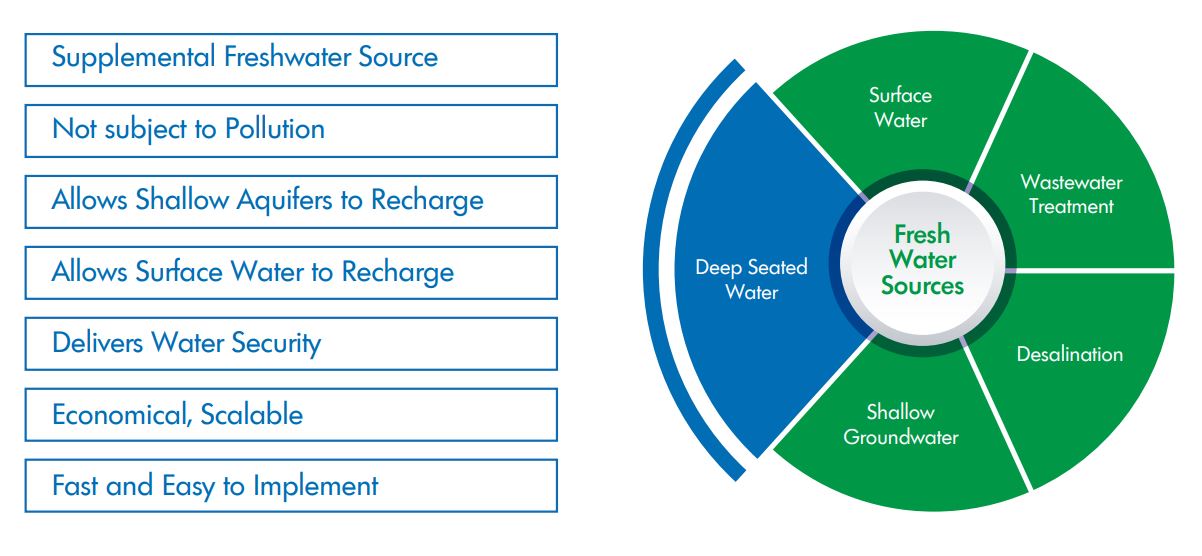
Microplastic Particles in Groundwater? It’s time for an Abundant Alternative Source of Fresh Water
AquaterreX Introduces Breakthrough Water Exploration Technology
As if it wasn’t enough to have bacteria, heavy metals, and even pharmaceutical drugs polluting our surface and groundwater, now studies are revealing that microplastic particles less than 5mm in size have “recently become a major environmental issue” according to Environmental Chemistry Letters link. The report states that microplastic contamination of soil and groundwater is detrimental to human health, plants, nematodes, earthworms, and soil properties.
One year ago we wrote about how water contamination is taking a toll on fresh water availability and usage around the world. Water is already a scarce resource, with just 1% available for use, according to the US Geological Survey. Add in growing contamination and pollution and one can see how this issue must be addressed while we find new sources of water and implement best practices in water management. Many sources like water from deeper aquifers (Deep Seated Water) are not contaminated as modern pollution has not reached these deeper levels.
According to the US Environmental Protection Agency National Water Quality Inventory Report to Congress in 2017 (the latest report), 46% of U.S. streams, 21% of lakes, 18% of coastal waters, and 32% of the nation’s wetlands are contaminated by water pollution. The most common contaminants are bacteria and heavy metals such as mercury, phosphorus, and nitrogen. The leading causes are farm runoff and pollution absorbed from the air. You can bet it has gotten worse since then as evidenced by this latest report on microplastics.
Untreated sewage kills 2.2 million people each year worldwide from diarrheal diseases. In the developing world, 10% of the population is severely infected with intestinal worms. In the U.S. 4.32 million people suffer from acute gastrointestinal illness from contaminated public drinking water systems. Water pollution effects, causes and solutions
Addressing the Water Contamination Problem
Fortunately, there is growing awareness of the water contamination problem. This has led to actions that can make a significant difference in water quality and availability. Water treatment has come a long way in recent years, but perhaps more importantly, certain best practices have started making a difference. In agriculture, runoff from fertilizers, insecticides, and animal waste can be mitigated by regenerative agriculture, organic farming, and drip irrigation.
Water conservation and water treatment become more important in this environment, and best management practices don’t all have to be costly, such as a transition to organic farming. Practices such as conservation tillage, cover crops, and simple water use efficiency as espoused by agricultural science leader University of California, Davis can make a real difference in the elimination and prevention of contamination in our water.
What Else Can Be Done to Find Contamination-Free Water?
The fact is, when it comes to fresh water, there is plenty of it. New technologies and best management practices can deliver enough fresh, contamination-free water to satisfy the needs of the planet.
The US National Groundwater Association estimates there are 6,000 years of freshwater supply in the upper two kilometers of the earth’s crust Nature Geoscience article. AquaterreX has developed the ability to locate and economically bring to the surface these previously untapped water resources.
Deep Seated Water – An Almost Unlimited, Alternative, and Clean Source
Deep Seated Water (DSW), is groundwater, typically sourced from deep aquifers that are located lower than shallow aquifers. Such deep aquifers are supplied not only from local catchment basins but also by subsurface inflows across basin boundaries. Deep Seated Water also encompasses water created at the mantle level of the Earth under extreme heat and pressure. Contamination does not occur in these deep water aquifers as modern pollution has not reached these deeper levels. And the best news is that this water is accessible and plentiful.
Deep Seated Water – The Missing Piece
Deep Seated Water is the Missing Piece that can solve the water crisis puzzle – contamination, drought, scarcity. Many water strategies focus on conservation, rather than additional supply. Other solutions such as desalination and wastewater treatment are potential answers for some, but they also come with trade-offs such as high cost, high energy usage, long planning periods, and toxic waste. Deep Seated Water is located almost everywhere on the planet, and it can be added to the mix of solutions as a supplemental freshwater source that is not subject to contamination, is fast and easy to implement and is economical and scalable. And, tapping Deep Seated Water allows both surface water and shallow aquifer sources to recharge, making the total system more environmentally sustainable.
We Can Solve The Water Problem
There is no question that we are facing freshwater challenges, not just in the US, but around the world. It is time to consider all of the alternatives and solutions at our disposal. Science and technology are advancing to the point where we can make a difference quickly if we just resolve to do it.
About AquaterreX
AquaterreX (www.AquaterreX.com) is a global environmental services organization with a mission to broadly implement effective water and food security solutions. The name AquaterreX comes from the Latin, aqua (water) and French, terre (earth, land) which is a derivative of the Latin, terra, and “X” for exploration. Thus, AquaterreX encompasses water and land solutions for the planet.

